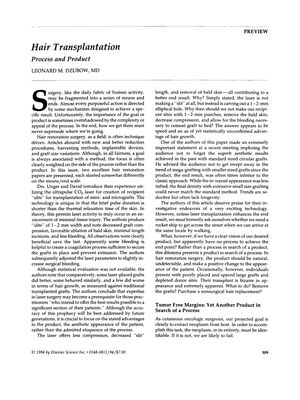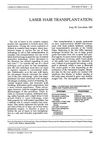Advancements and Challenges in Hair Transplantation Surgery
August 1994
in “
The Journal of Dermatologic Surgery and Oncology
”

TLDR The article concludes that hair transplantation is advancing, but a reliable way to ensure complete tumor removal is still needed.
In the 1994 article, Dr. Leonard M. Dzubow discussed the advancements and challenges in hair transplantation surgery, emphasizing the importance of focusing on the end result—the aesthetic appearance of the patient—rather than the surgical process itself. Drs. Unger and David shared their experience using the ultrapulse CO₂ laser to create recipient "slits" for mini- and micrografts, noting benefits such as decreased graft compression and minimal bleeding, although some bleeding was necessary to secure the grafts. They suggested that laser surgery expertise might be essential for optimal results, but acknowledged that the advantages in hair growth were not statistically confirmed. The article also cautioned against getting swept away by trends such as mega-grafting with smaller grafts, which may not provide the same final density as standard methods. The authors were praised for exploring new technology, but it was questioned whether such advanced technology was necessary if it did not enhance the final outcome. Additionally, the article touched on the challenges of correcting poorly executed hair transplants and the limitations of current techniques in ensuring complete removal of squamous cell carcinomas, as highlighted by a study of 20 cases where rapid cytokeratin stains revealed residual tumor missed by standard H&E stains. The article concluded that while progress is being made, a definitive method for confirming total tumor extraction is still needed.




